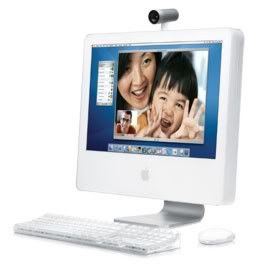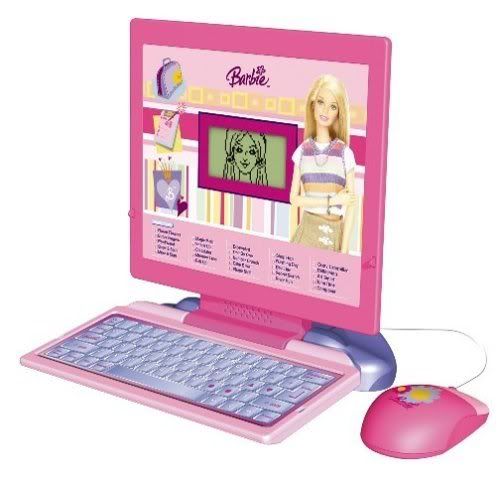How to Buy Desktop Computers for Your School



Which desktop computer are you?
The purchase of computer systems may be one of the more crucial decisions your school would make. Aside from the serious financial investment it entails, the procurement of desktop computers, may make or break your school's foray into the information age. In these days when everyone is going electronic, your school will be left behind if it sticks with using just the blackboard and pen. Don't fret. You can help your school purchase the computer that is right for your needs.
Contrary to what you think, the kind of computer is only a secondary consideration. The most important question to ask is this: What will you use the computers for? It is true that the general rule to choosing a computer is the faster or bigger the specs are, the better. But better would be relative to the demands you will expect from your computers.
Since you will be purchasing for the computer laboratory, you can more or less expect the computers to be used for regular computing tasks such as word processing or for computer-aided instructions using PowerPoint, perhaps some Internet browsing, or basic desktop publishing. That out of the way, you are now ready to choose your desktop computer!
The list of specifications (specs) for a desktop computer would look something like this:
Processor: Intel Pentium 4 processors 2.40GHz
Memory: Standard 256MB Dual Channel DDR SDRAM Memory
Hard Drive: Standard 40GB Ultra ATA/100 Hard Drive (7200 RPM)
Screen: 14" WXGA+ (1440 x 900)
Optical Drive: CD-RW/DVD 48x Combo Drive
Graphics: Intel Integrated GMA 950
Wireless: Intel 3945 802.11a/b/g
These information will mean nothing to ordinary people like most of us. However, understanding them will prove very helpful in choosing the computer that suits your school's needs. Here's a layman's guide to understanding the vital statistics of a computer system.
Processor. The processor or the Central Processing Unit (CPU) is the computer's brain. You will not be able to see the processor itself when buying a computer because it is inside the box or tower. You'll be surprised at how small the chip that controls all the processes in a computer is. Because of its very important role in a computer system, the processor is always the first item listed on the specs. You'll be able to identify the chip on the specs based on the name of its manufacturer (Intel or AMD) and model, and its speed expressed in gigahertz (GHz). In our example, the name of the manufacturer is Intel, the model is Pentium 4, and its speed is 2.40 GHz.
Both Intel and AMD have several types of processors in the market that have varying speeds. But of course, the more powerful the chip you want, the more expensive it will be. The latest technology today is the introduction of the dual-core processor which is touted to be a lot faster than its single-core predecessor. Keep in mind though that the latest or the fastest processor may not necessarily be the best for you.
Choose a processor that is fast enough for your needs. Since your computer is going to be used mostly for word processing and academic instruction, an average-powered processor will get you through.
Memory. The system memory or Random Access Memory (RAM) refers to how fast your computer processes data. Like the processor, the RAM is also a chip that is connected to the motherboard. When the computer is operating, all the software that are running are extracted from the hard drive and temporarily stored in the RAM where the CPU can access them faster. RAMs are judged by their capacity which is expressed in megabytes (MB). Most computers nowadays have at least a 512 MB to as big as 1024 MB of RAM.
Aside from the size of the RAMs, you also have to consider the type. The most common types of RAM used in computers today are SDRAM (synchronous dynamic RAM), DDR SDRAM (Double Data Rate SDRAM), and DDR2 (2nd Generation Double Data Rate SDRAM). DDR is the most commonly used RAM nowadays.
When choosing the RAM that you would want in your computer, consider the software that you intend to run on it. Software would include the operating system and the applications for word processing, gaming, or multimedia. These usually have varying specific RAM requirements to be able to run efficiently. For the computers in school, at least a 512 MB RAM is good enough to run Windows XP Professional or Home Editions and the complete Windows Office suite.
Hard drives. This is short for hard disk drive (HDD). This is where all of your data are stored. Like RAMs, hard drives are judged based on their capacity and speed. They range from 40 gigabyte (GB) to as huge as 100 GB capacities. The disks inside the drives spin at extremely fast speeds to facilitate the easy retrieval of saved data. Most desktop computers for household and commercial use spin 5400 to 7200 revolutions per minute (rpm).
So what type of hard disk drive do you choose? Word processing, academic instruction, basic desktop publishing, and Internet browsing will require at least 40 GB of hard disk capacity with a speed of 5400 rpm.
Optical drives. These are the CD or DVD drives in the computer. More and more computers are foregoing the floppy disk drives in favor of optical drives since CDs and DVDs store more data more efficiently and for a longer period of time. Optical drives may be read only (ROM) or writers for data storage (R, RW, or RAM). They are rated based on their speeds. You�ll find in their specs descriptions like 8x, 16x, 24x, or 48x which describes how fast the drives read or write data based on the speed of the original CD or DVD standards. For example, a DVD drive with a 48x specs means it is 48 times faster than the original DVD standard speed. Combination optical drives nowadays are becoming commonplace. Optical drives that are CD-RW/DVD means it can read and write CDs and read DVDs.
It is still advisable that you buy a desktop with a floppy disk drive. However, it is also good to have at least a CD-ROM or a CD-RW drive since most software are distributed in CD format and that more and more people are choosing to store their data in CDs.
Video cards/Graphics cards. These are responsible for the images you see on the monitor. Again, the video card that you will choose will depend on the work that you intend to do in your desktop. Most home and business computers have integrated graphics cards (these are video cards that come with the motherboard). These are good for handling 2D graphics for word processing, Internet browsing, and even watching CDs and DVDs. A 3D graphics card is appropriate for gaming, graphics animation, or graphics and video editing. For more sophisticated graphics requirements, you will need a high-end graphics card.
For your purpose, a regular integrated graphics card will suit your casual computing needs.
Communication ports. These are ports that will connect your computer to other computers and devices (like a digital camera, a digital music player, printer, or scanner) to a local area network, or the Internet. These are necessities especially since computers are being used to connect to the world. USB ports are the most popular connectors because of its capacity to transfer large amounts data fast. IEEE 1394 or FireWire ports are the preferred connectors when transferring data from devices such as camcorders, external optical drives, and external hard drives.
Choose a computer that has 2 to 8 USB ports. It can also have a FireWire port but is not necessary.
Monitors. Display monitors may be CRT (cathode ray tube) or LCD (liquid crystal display). CRT monitors are the usual computer monitors which look like TV sets. LCD monitors are becoming more popular because it is less bulky.
CRT monitors are more affordable and have a wider range of capabilities compared to relatively more expensive LCD monitors that are sleek-looking and space-saving. Whatever kind of monitor you choose to buy, make sure it is at least 17" with a resolution of 1280 by 1024 pixels.
Sources:
Before You Buy Desktop Computer Systems. http://compreviews.about.com/cs/desktops/bb/aabybdesktops.htm (accessed 15 June 2006)
Desktop PCs: The Essential Consumer Buying Guide. http://www.pcmag.com/article2/0,1759,1778274,00.asp (accessed 15 June 2006)
PC Guide. http://www.pcguide.com/ref/video/index.htm (accessed 15 June 2006)
Understanding PC Specifications. http://www.eu-energystar.org/en/en_025.htm (accessed 15 June 2006)
Note: This article is published in Quality Teacher Vol 10 Iss 1


No comments:
Post a Comment